|


|
FROM SITE SELECTION
MAGAZINE, March 2023 ISSUE
|

|
GOVERNOR’S CUPS 2022
Kansas claims a second consecutive Cup and Texas an 11th in our annual
tally of total and per capita project wins the previous year.
|
|
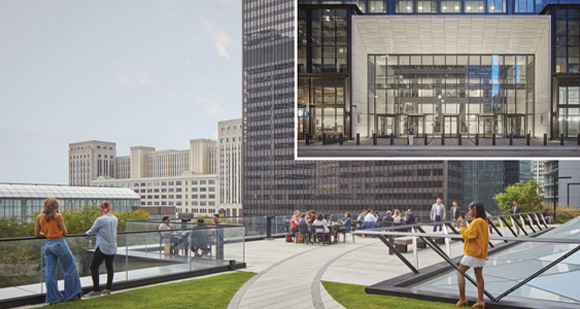
|
TOP METROS OF 2022
That’s a strong indicator across the Top Metros of 2022.
|
|
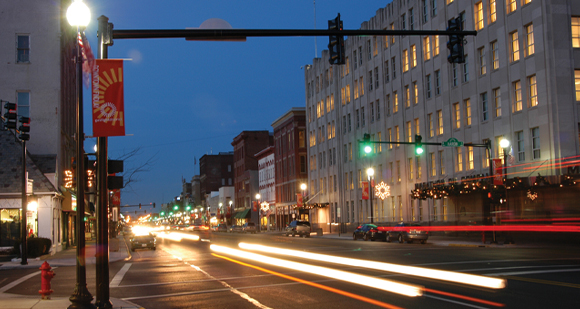
|
TOP MICROPOLITANS OF 2022
Northwest Ohio’s perennial juggernaut shows how it’s done, again.
|
|
 |
MISSISSIPPI RIVER CORRIDOR
St. Louis, Missouri, and Blytheville, Arkansas, top this year’s
cumulative and per-capita rankings for metro regions along the
Mississippi River.
|
|
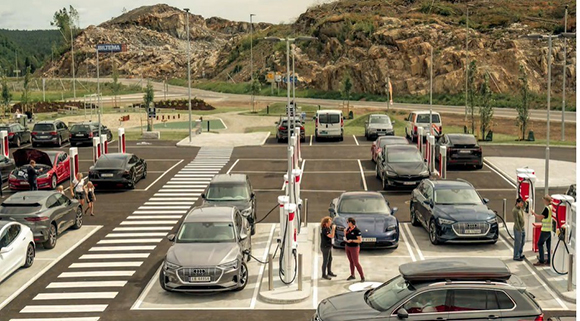
|
The Circle K Bamble location in Norway is one of the busiest charging
forecourts in the world.
2021 photo courtesy of CNW Group/Alimentation
Couche-Tard Inc.
|
|
The EV marketplace is seemingly everything everywhere all at once. But
is your country or region truly ready for electric mobility? Arthur D
Little last August released the 2022 update of its “BEV Readiness
Study,” first carried out in 2018. The only country to be fully EV
ready? Norway.
“Norway leads in EV adoption with a score of 115 in the 2022 ADL Global Electric Mobility Readiness
Index (GEMRIX 2022),” said ADL of a country where Quebec-based
Alimentation Couche-Tard Inc. and its global brand Circle K in 2021 had
established a high-speed charging network with more than 500 chargers on
its forecourts. “Next come the Ambitious Followers — China, Germany, UK,
and Singapore — where all prerequisites for EV mobility are in place and
EVs are on the verge of becoming mainstream. These countries are
followed by the Emerging EV Markets: U.S., Japan, UAE and Thailand.
Here, EVs are still inferior to cars with an internal combustion engine
(ICE), even though customers are becoming more comfortable with the idea
of EVs as infrastructure is ramping up. Lastly, the Starters — Mexico,
India, Brazil, Indonesia, Vietnam, and South Africa — have just entered
the game and face major challenges in costs and infrastructure.”
A search for the phrase “electric vehicle” in the Conway Projects
Database reveals 398 qualified projects with some connection to EVs
(from installing charging stations at an office to making vehicles or
batteries themselves) since 2015. The gradual increase goes from 32
projects in 2015-2016 (many in China) to 22 projects in 2017, 29 in
2018, 34 projects in 2019, 46 in 2020, and then a sudden jump to 104
projects in 2021 and 130 last year.
An EV maker from one of those Starter countries — Vietnam — just
invested last year in one of the Emerging EV Markets (the U.S.) with a
major foothold in North Carolina. The U.S.
ramp-up also got a major power boost this week as the U.S. Postal
Service awarded contracts for a major BEV purchase as well as initial
orders for more than 14,000 charging stations to be deployed at its
facilities. “Overall, the Postal Service’s total investment in vehicles
is expected to reach $9.6 billion, including $3 billion from Inflation
Reduction Act (IRA) funds,” said a release from the USPS, noting a
commitment to purchase 9,250 Ford E-Transit Battery Electric Vehicles
(BEVs), manufactured at Ford’s Claycomo plant in Kansas City, Missouri.
Watch for the latest on EVs, ICE and other project news in the North
American Automotive story in the May 2023 issue of Site Selection. — Adam Bruns
|
|
 
|
|
COLORADO – BUSINESS
COMES TO LIFE 2023
|

|
BUSINESS CLIMATE
Colorado’s environment for doing business is as healthy as its growing
populace.
|
|
Ontario
AstraZeneca this week announced it is bringing 500 scientific jobs to
the Greater Toronto Area (GTA) in a major expansion of its research
footprint in Canada at its Research & Development Hub in Mississauga,
which focuses on leading global clinical studies in areas including
breast, lung and prostate cancer, COVID-19, and chronic kidney disease.
It also includes the creation of a new Alexion, AstraZeneca Rare Disease
Development Hub, which focuses on rare disease research. The company
said the decision to invest in Canada, and Ontario specifically, is a
testament to the network of world-class universities, hospitals, and
research centers in the GTA and southern Ontario, and the diverse
scientific talent pool that exists in the region. “AstraZeneca values
the Ontario government’s recent introduction of the province’s
first-ever life sciences strategy, as well as its commitment to grow the
biomanufacturing footprint in the province and foster local innovation
to improve healthcare,” the company said. The Mississauga-based R&D Hub
already has doubled in size since 2019 and is currently leading more
than 120 oncology and biopharmaceutical global clinical studies,
involving patients in 50+ countries.
Nebraska
In February Vireo Resources and the community of Plattsmouth celebrated
the grand opening of the first creatine production facility in the
United States. The Nebraska Department of Economic Development (DED) and
the City of Plattsmouth supported the project with $1 million of funding
through the Community Development Block Grant (CDBG) Program. The
Tennessee-based company first came to Nebraska in 2008, “attracted by
Nebraska’s business-friendly climate and outstanding academic
institutions,” says a release from the state. “Vireo has had great
success partnering with Nebraska researchers, commercializing
technologies developed with the University of Nebraska Medical Center
(UNMC) in collaboration with UNeMed, the technology transfer office at
UNMC.” Currently, the majority of creatine products available in the
U.S. come from China. Vireo licensed a UNMC patent related to its
production of Creatine HCl. Vireo’s growth in Plattsmouth has also been
aided by the Economic Opportunity Program (EOP) through the Nebraska
Department of Transportation (NDOT). The EOP Program helps local
communities attract jobs and private capital investment by providing
grants to assist with first-mile/last-mile connections to Nebraska’s
statewide transportation system. NDOT approved $322,586 to help the City
of Plattsmouth fund construction of a roadway to Vireo’s industrial
campus.
|
|

|
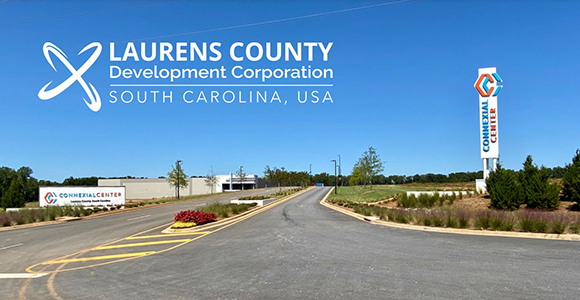
|
Laurens County, South Carolina, is brimming with commercial and
industrial potential along nearby Interstate I-85, recently referred to
as “the Main Street of the New South.” The county’s newest industrial
park, the Connexial Center, is in close proximity to I-85, I-26, and
I-385 industrial corridor, which provides access to the most efficient
port on the East Coast as well as Interstate and rail connecting to more
than 100 million consumers in a day’s drive.
One of seven in Laurens County, the Connexial Center is a Class A
industrial park with 450 developable acres of prime industrial property
ready for investment, development, and growth. All utilities — including
transmission and substation — onsite. And all due diligence has been
completed, providing an efficient path for companies looking to move
operations forward, faster. In addition, the current Laurens County
workforce consists of over 468,000 people within a 45-minute drive time
radius.
For more information, visit www.growlaurenscounty.com.
|
|
|
KENTUCKY 2023 DIGITAL
EDITION
|

|
The full Digital
Edition of the 2023 Kentucky Economic Development Guide is now
available. Inside, find our cover story on the commonwealth’s bourbon
boom; an in-depth conversation with Governor Andy Beshear; insights into
the automotive/EV, metals, logistics, ag & food and manufacturing
sectors; and profiles of state innovation hub, higher education, IP
protection and site development programs, among other coverage.
|
|
|
SITE SELECTION
RECOMMENDS
|
|
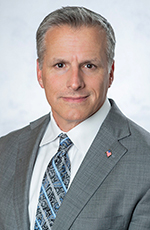
John Magness
|
As reported by several sources, John Magness, a
Desert Storm veteran and the Hillwood senior
vice president who helped lead the redevelopment
of Norton Air Force Base in San Bernardino
County, perished in February during a mountain
climbing expedition in Argentina, the “Aconcagua
Challenge” to raise funds and awareness for
Johnny Mac Soldiers Fund, a Virginia-based
organization “providing scholarships to veterans
& military family members, especially to
children of our nation’s fallen or disabled.” See this link for more
information about him and the Johnny Mac
mission, and this story for a profile
of Magness’ life and career. Site Selection’s
Ron Starner checked in with John
Magness a number of times over the past decade as
growth continues in the area he helped pioneer
as an e-commerce and logistics capital.
|
|
|
|
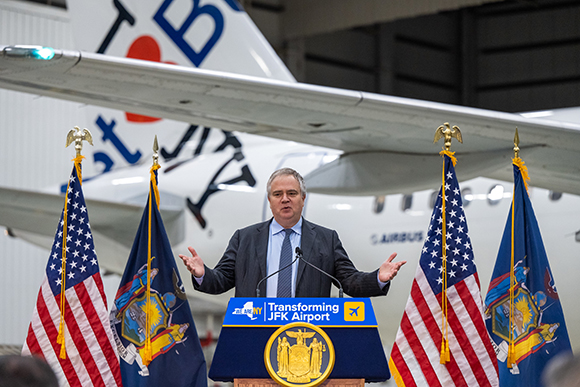
|
JetBlue CEO Robin Hayes speaks at the JFK Terminal 6 groundbreaking event
held at the airline’s JFK hangar.
Photo courtesy of the Office of the
Governor of New York
|
|
New airport terminals were in the news this week. First (pictured),
JetBlue joined New York Governor Kathy Hochul and others to celebrate
the groundbreaking of a $4.2 billion project to develop a new
international Terminal 6 at John F. Kennedy International Airport by the
Port Authority of New York and New Jersey. “It was 23 years ago that
JetBlue launched our first flights from our home at JFK, eventually
growing and taking over our modern Terminal 5 and now sending customers
to more than 80 destinations, including London and soon Paris,” said
Robin Hayes, CEO of JetBlue. “As we move JFK into the future with a new,
state-of-the-art, customer-focused facility, we are so pleased to have
an opportunity to expand our presence with new gates in a new terminal.
With hiring ongoing throughout the company, more than 7,000 JetBlue
crewmembers are now based at JFK, the airline said.
Meanwhile, in the Midwest this week, a ribbon-cutting was held on
February 27 and a ceremonial “water salute” greeted the first arriving
flight in Kansas City at a series of events long awaited by the business
community: the grand opening of a new 40-gate central terminal to
replace Kansas City International Airport’s now-obsolete semicircular
satellite terminals layout, which debuted just over 50 years ago. At
just over 1 million sq. ft. and a budget of $1.5 billion, the new
terminal is the largest single infrastructure project in the city’s
history, a release from the City of Kansas City, Missouri, stated. “This
terminal is a new front door to the people of Kansas City, to everyone
in our region, in Missouri and Kansas. We are on time, in fact a day
early, and on budget,” said Kansas City Mayor Quinton Lucas. “Because of
this project thousands of Missourians and Kansans have gotten jobs and
built new careers. Because of this project we will bring millions, if
not billions, of dollars in new economic development to Missouri and
Kansas.”
|
| |

